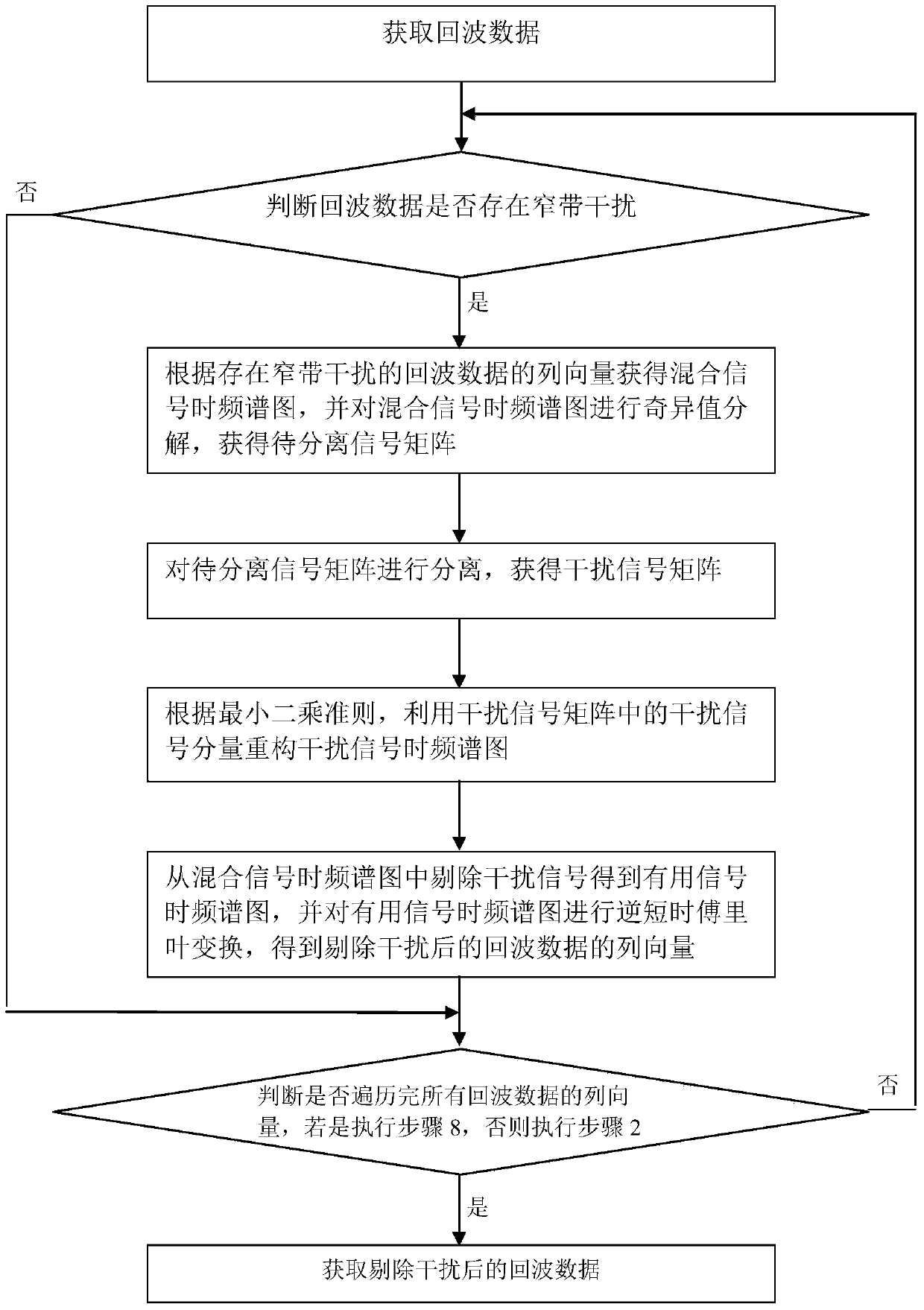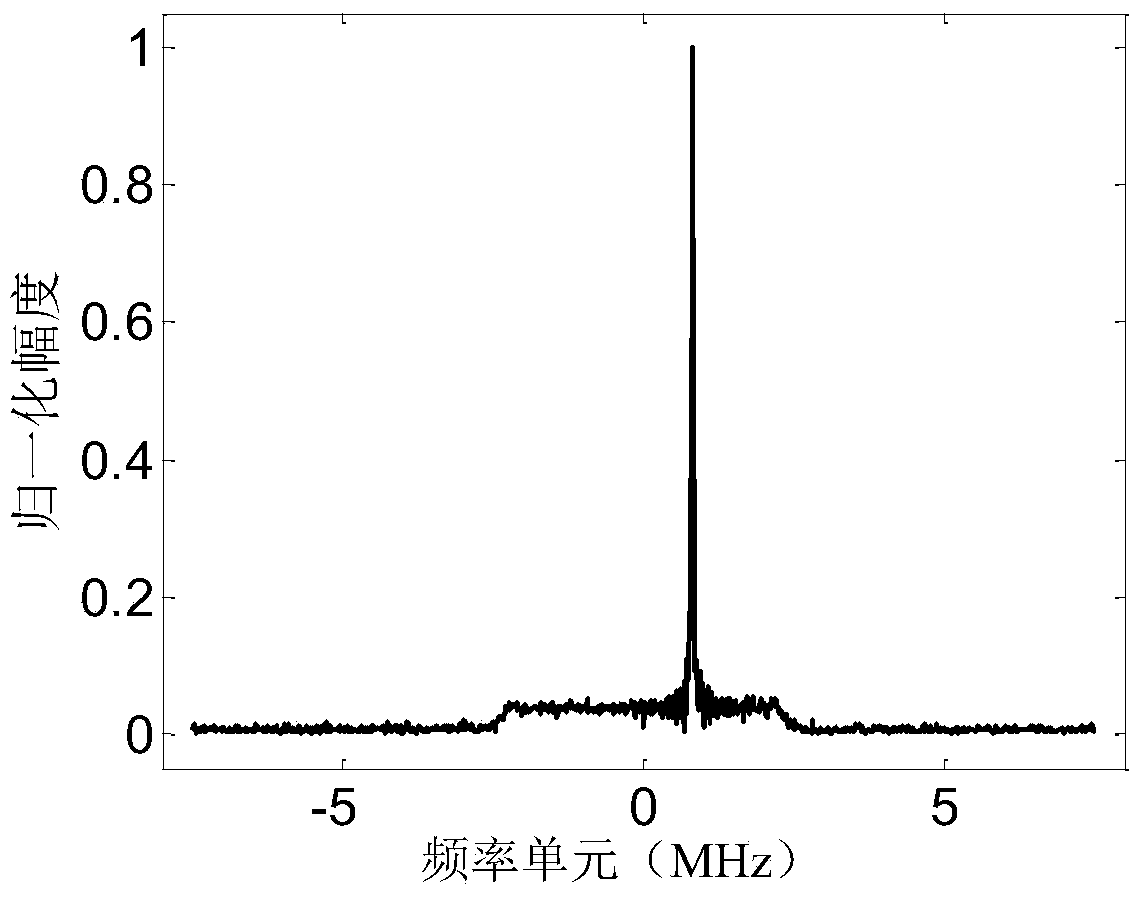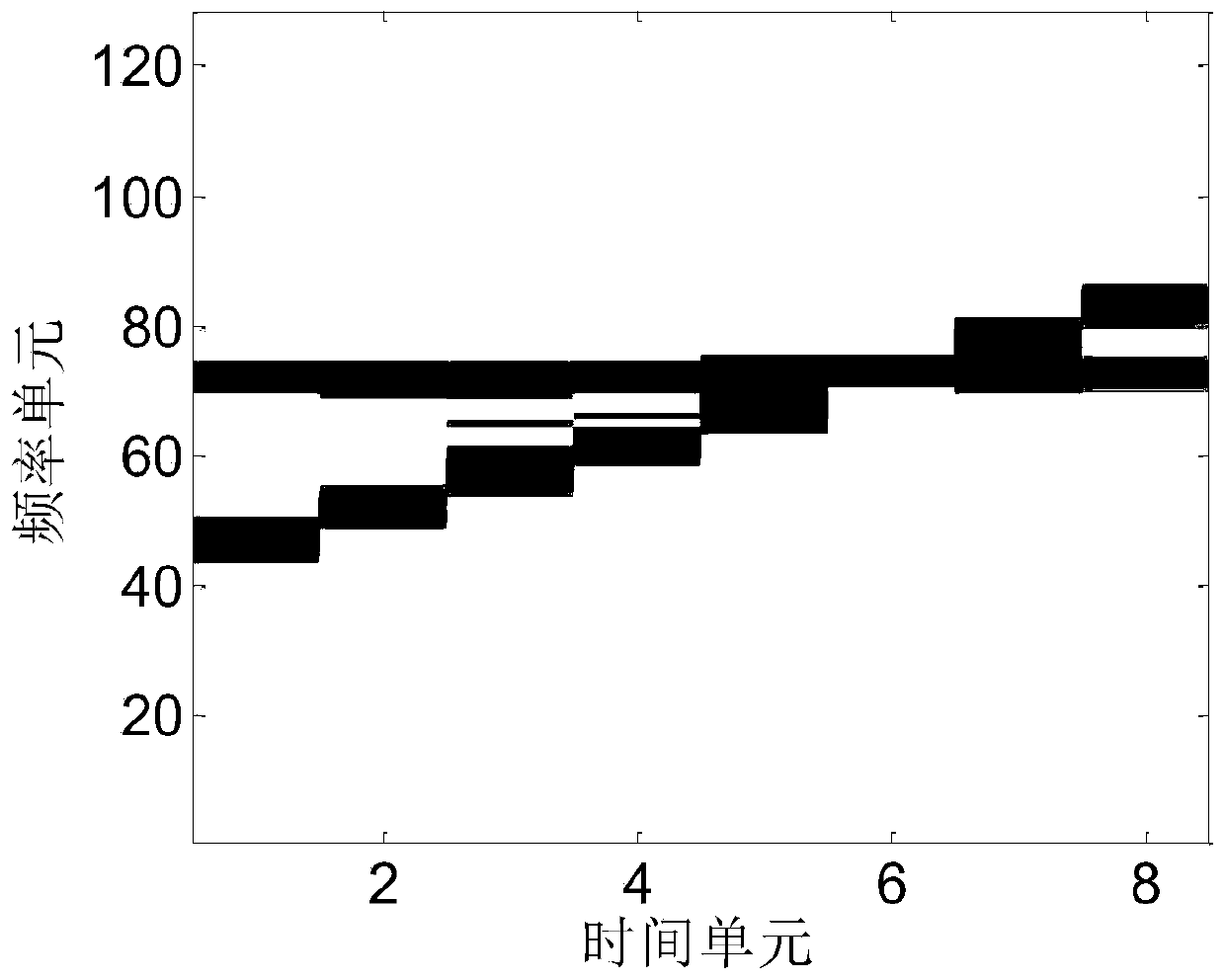SAR time-varying narrow-band interference suppression method based on time-frequency spectrogram decomposition
A narrow-band interference and time-spectrum technology, applied in the field of signal processing, can solve the problems of reducing the calculation accuracy of the independence criterion, not considering the global statistical characteristics of the interference signal, shortening the length of the interference signal, etc.
- Summary
- Abstract
- Description
- Claims
- Application Information
AI Technical Summary
Problems solved by technology
Method used
Image
Examples
Embodiment Construction
[0046] In order to make the above-mentioned and other objects, features and advantages of the present invention more obvious, the following specific embodiments of the present invention are given and described in detail in conjunction with the accompanying drawings.
[0047] The basic idea of the method of the invention is as follows: after the echo data is obtained, firstly, the narrowband interference is qualitatively identified on the echo data; The time-frequency spectrum of the mixed signal is obtained, and singular value decomposition is performed on it to obtain the corresponding signal matrix to be separated; then, using the difference and independence of the narrow-band interference signal and the useful signal in the time-frequency domain, the blind source separation method is used to obtain the obtained signal. The interference signal matrix to be separated is separated to obtain the interference signal matrix; after that, the time-spectrogram of the corresponding ...
PUM
 Login to View More
Login to View More Abstract
Description
Claims
Application Information
 Login to View More
Login to View More - R&D
- Intellectual Property
- Life Sciences
- Materials
- Tech Scout
- Unparalleled Data Quality
- Higher Quality Content
- 60% Fewer Hallucinations
Browse by: Latest US Patents, China's latest patents, Technical Efficacy Thesaurus, Application Domain, Technology Topic, Popular Technical Reports.
© 2025 PatSnap. All rights reserved.Legal|Privacy policy|Modern Slavery Act Transparency Statement|Sitemap|About US| Contact US: help@patsnap.com



